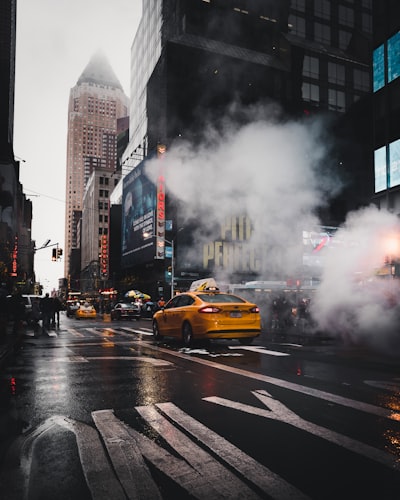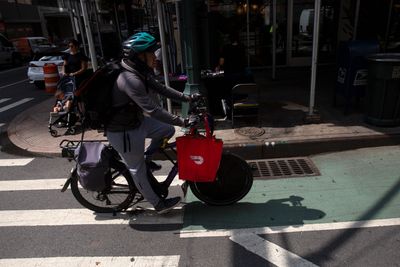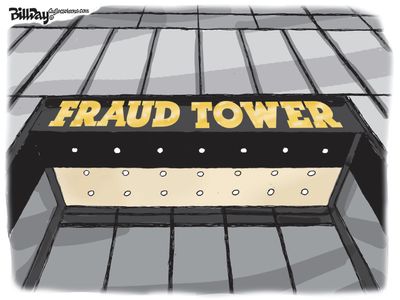Jose Martinez, THE CITY

This article was originally published on Mar 17 at 7:24pm EDT by THE CITY
Weekday subway ridership is nearing 60% of pre-pandemic levels and office occupancy is on the rise, but at a gateway to one of the city’s busiest subway stations, it might as well still be 2020.
A privately maintained entrance into the 42nd Street-Bryant Park/Fifth Avenue station remains shuttered more than two years into the pandemic, long after building owners reopened several others that were closed as COVID took hold and sunk subway ridership.
“It’s 2022, you need to get serious with it,” said Goh Hub, 21, after encountering the barricaded entrance at 39th Street and Sixth Avenue while on his way to the No. 7 line stop at the station. “It’s been long enough now for this thing to still be closed.”
The stairwell and elevator at 39th Street and Sixth Avenue — which are maintained by 7 Bryant Park, a 30-story tower that houses the Bank of China — provide additional access to a sprawling station that, according to MTA figures, was the 12th-busiest in the city in 2019 with an average of more than 58,000 riders on weekdays.
THE CITY reported in October 2020 that it was among nine privately owned subway entrances in Midtown and Lower Manhattan that remained closed six months into a pandemic that, at one point, sent ridership plummeting by more than 90% and emptied offices, as many New Yorkers worked from home. By May, seven entrances remained off-limits.
Now, all but one have reopened — as subway ridership has topped 3 million for seven straight weekdays, MTA data shows, and as 61% of employers expect daily attendance in their Manhattan offices will surpass 50% by the end of the month, according to January a survey of major employers by the Partnership for New York City.
“We keep hearing all the time from people wringing their hands about people not coming back to their offices, but you have got to pave the way for that,” said Danny Pearlstein, policy director for Riders Alliance, an advocacy group.
Ongoing Obstacles
Neither a spokesperson for 7 Bryant Park nor the MTA could say when the barricades at the 39th Street entrance will be removed and the elevator restored to service at a station that now has about 11,550 turnstile entries on an average day in March.
That’s up from a daily average of 7,000 from a year ago but down from a daily average of 31,400 before the first pandemic shutdown in March 2020, according to an analysis by THE CITY of turnstile data from the complex.
But continued closure of the entrance to the Bryant Park station points to the obstacles the MTA and subway riders face in parts of the subway where upkeep of entrances, elevators and escalators falls not on the transit agency, but on owners of neighboring buildings.

Approximately 150 entrances throughout the 472-station subway system are privately maintained, and the MTA has, in some cases, tangled in court with landlords over out-of-service station escalators.
“Bottom line, we don’t have any control over them. There are deals made before that we don’t control those developers,” Janno Lieber, the MTA chairperson and CEO, told THE CITY. “However, we are using all the powers that we do have at our disposal to put pressure on them.”
Kathryn Wylde, head of the Partnership for New York City, which represents hundreds of business leaders that employ more than a million New Yorkers, said the visual of a barricaded subway entrance is not helpful to a city emerging from a pandemic.
“There is no logic for a subway entrance in a high-volume location to remain closed,” Wylde said. “Part of our recovery is to reopen.”
A Buildings Department spokesperson told THE CITY that inspectors plan to check Friday whether the elevator is open to the public.
Jessica Murray of Rise and Resist’s Elevator Action Group, which advocates for accessibility in the transit system, said subway entrances should never be closed.
“If a private owner is going to build an elevator and it’s a public improvement and they get some form of benefit from it, then it needs to be accessible 24/7,” Murray told THE CITY.
‘They Were Using It as a Toilet’
Lieber said the MTA opened a record number of subway elevators in 2021, but transit and disability rights advocates have said the agency will need stronger oversight. The agency last year announced plans to add or renovate elevators at more than two dozen stations, including some where the equipment will be built and maintained by private companies.
An MTA spokesperson said the decision to close the 39th Street entrance to the Bryant Park station was “safety related” because the corridor at the base of the stairs was “attracting illegal and problematic activities” when ridership in and out of Midtown plunged during the pandemic.
The MTA said it is working with property owners to keep station entrances open, consistently maintained and safe, but added that entrances can be closed temporarily due to unsanitary conditions.
That’s what has been happening at the privately maintained entrance to the 42nd Street/Port Authority Bus Terminal station on the west side of 44th Street and Eighth Avenue. It was closed Tuesday evening, but open by Thursday morning, though an elevator remained out of service.
A spokesperson for West 44th Street Hotel LLC, which maintains the entrance, did not respond to calls or emails.
“They were using it as a toilet and smoking in there and people were sleeping on the stairs, too,” said Chalei Davis, 30, who told THE CITY she has spent nights inside the entrance. “It was too much.”

A spokesperson for 7 Bryant Park, which was completed in 2016, declined to comment on occupancy rates at the glass-and-stainless steel tower, and the Bank of China did not respond to questions.
Lilah Brown, 23, walked a block north to another station entrance Tuesday after encountering the closed entrance at the station while trying to catch a train to Brooklyn.
“It’s confusing,” said Brown, who does not usually commute from the station. “But I guess if it’s privately owned, it’s up to the landlord, and not up to me.”
THE CITY is an independent, nonprofit news outlet dedicated to hard-hitting reporting that serves the people of New York.




